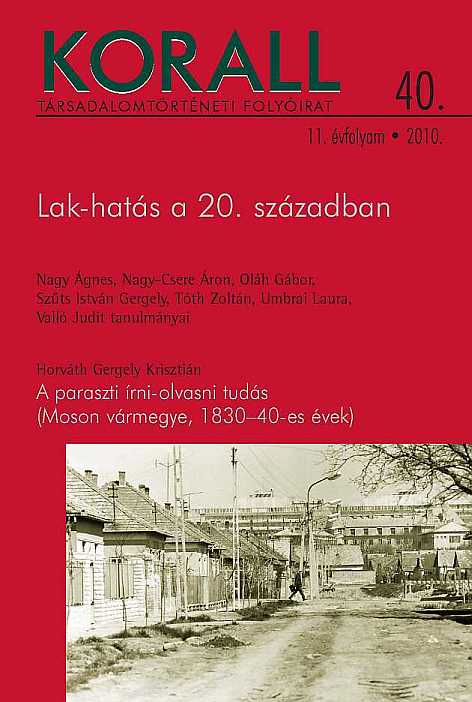Nemzetgyilkos lakástípusok vagy a modern nagyvárosi élet szimbólumai? Középosztályi kislakások a harmincas évek Budapestjén
Anti-National Dwellings or Symbols of Modern Urban Life? Small Flats for the Middle Class in Budapest in the 1930s
Author(s): Judit VallóSubject(s): History
Published by: KORALL Társadalomtörténeti Egyesület
Summary/Abstract: The increasingly popular modern blocks of flats introduced a thus far unknown type of residence into the Hungarian housing market between the two world wars. For example, the high quality, high-rent, one bedroom flats (six types thereof ), sometimes containing a hall or a maid’s parlour. The most popular of these were 30-31 m2 studio flats. This type of flat was not simply smaller than previous models of middle class homes, but their proportions and layout were also entirely novel compared to previous ones. While the previously central kitchen disappeared or found place in one corner of the tiny hallway, the bathroom became an obligatory fixture in all of the new studio flats. As opposed to contemporary notions, the 1941 census figures for Budapest housing suggest that rather than providing homes for young and childless civil servant couples, these flats were mostly occupied by single people. Studio flats were typically occupied by economically active, working men and women, as well as widows living on pension. The independent activity of these tenants on the housing market, especially the latter two groups, was a novelty in this period. The type of single woman with a middle class or intellectual jobs appeared in Budapest in the 1930s. Many of them, such as Hilda Gobbi (discussed in present study), had been born into middle class families with stable income and were raised to become wives and ‘professional’ homemakers. However, reaching adulthood they faced a transformed world, where their families’ or their own lifestyle necessitated their income as well. By 1941, those who were successful at switching over from dependents’ into self-sufficient working women entered the modern housing market of the capital as independent tenants of the new studio flats.
Journal: Korall - Társadalomtörténeti folyóirat
- Issue Year: 2010
- Issue No: 40
- Page Range: 84-113
- Page Count: 30
- Language: Hungarian

